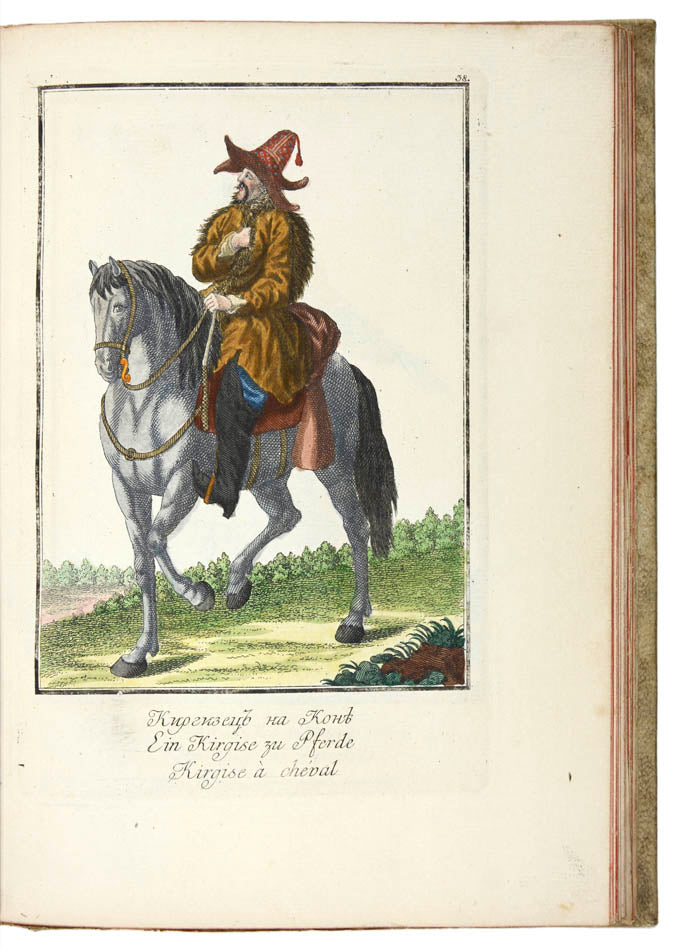GEORGI, Johan Gottlieb.
Description de toutes les nations de l'empire de Russie, ou l'on expose leurs moeurs, religions, usages, habitations, habillemens et autres particularites remarquables.
Description de toutes les nations de l'empire de Russie, ou l'on expose leurs moeurs, religions, usages, habitations, habillemens et autres particularites remarquables.
Stock Code 75903
Muller, St Petersburg, [1776-77].
All captions for the engravings were printed in three languages, so that it could be supplied to the text volumes of any of the three issues: French, German and Russian. The work is divided into the following sections: I. People of the Finnish tribe (25 plates), II. Tatar people (30 plates), III. Samoyed, Manchu and Eastern Siberian people (20 plates).
Johann Gottlieb Georgi (1729-1803) was a German geographer and chemist. In 1770 he studied at the Russian Academy of Sciences in St. Petersburg. Two years later Georgi went to accompany Peter Simon Pallas, a German zoologist and biologist, on his expedition through Siberia. "He was particularly interested in the region of the Lake Baikal. His description and mapping of this region remained one of the most accurate and significant for several decades. After his return to St. Petersburg Georgi published the observations he made during his trip. It is hard to overestimate Georgi's work. His records provided extensive and accurate ethnographical, economical, botanical and geographical descriptions of the large part of the Russian Empire." (NDB, Neue Deutsche Biographie VI, 242).
Quarto (26.5 x 18.3 cm). 90 numbered plates coloured by hand, Russian, German and French captions in the plate; first plate spotted, small traces of mount to the versos. Later vellum with manuscript score; soiled.
Couldn't load pickup availability
Provenance
Provenance
Delivery
Delivery
We offer secure and express delivery on all local and international orders of rare books, maps and prints placed through this website.
About us
About us
Shapero Rare Books is an internationally renowned dealer in antiquarian & rare books and works on paper.
Our Bookshop and Gallery can be found in the heart of Mayfair at 94 New Bond Street, where most of our stock is available to view and on public display.
We exhibit at major international art fairs, including TEFAF (Maastricht and New York), Frieze Masters, Art Miami and Masterpiece London, as well as antiquarian & rare book fairs including New York, Paris, London, Los Angeles, San Francisco and Hong Kong.
Ask us a question
Ask us a question











